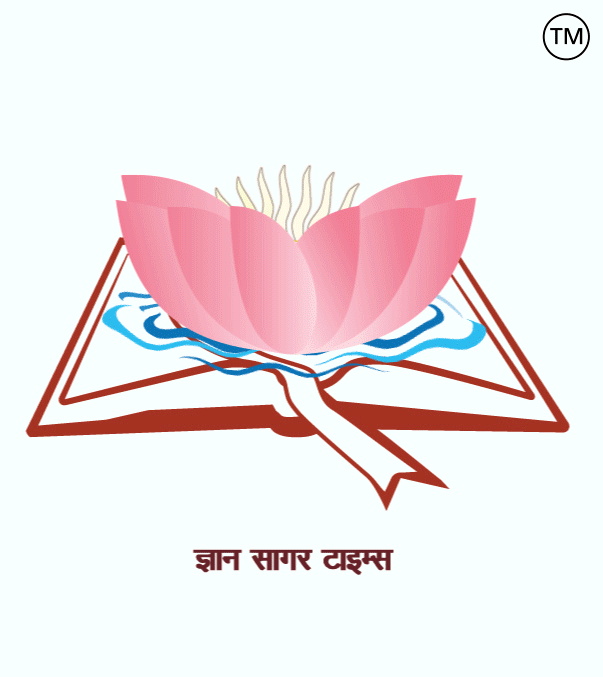
Related to Botany-149
 1. What is called the principle of selection of nature? = Darwin. 2. The origin of new species due to a change of genes from old species is called? = Neo Darwinism. 3. The world’s largest plant whose height is 90 meters and diameter is 13 meters, its name? = Sequoladendron giganteum. 4. The first systematic attempt was made to classify organisms,? = Hippocrates and Aristotle. 5. The plants in which flowers are formed are called? = Flowering Plants/ Angiosperms. 6. The process that takes place in plants by the stomata located on the lower surface of the leaves is called? = Transpiration. 7. The technique of growing plants without using soil is called? = Hydroponics. 8. Ginger is a stem, not a root because it has? = Internode & Nodes. 9. The leaves of the Mimosa plant wither on touching because? = The turgor pressure of the leaf base is changed 10. Which color rays of sunlight are most absorbed by chlorophyll during the process of photosynthesis? = Blue and Red. 11. Photosynthesis also occurs in some bacteria because it is found in? = Chlorophyll. 12. If a dicot root is cut in an oblique direction, then whatever parts are found in its internal structure from outside to inside are the parts found inside? = Epidermis, cortex, pericycle and vesicle bundle. 13. Which is called the kitchen of plant cell? = Chloroplast. 14. What is called Leucoplast? = It is colourless plastid which is found in the cells of those parts of the plant which are away from sunlight such as: – Roots, underground stems. 15. What is called Chromoplasts? = It is colored plastids which are usually red, yellow and orange in color. These are found in the colored parts of the plant like flowers etc. Eg: – Lycopene in tomato, carotene in carrot, Betanine in Beat roots. 16. Chloroplast is found only in plants? = Photosynthetic Plants. 17. Transport of water in plants takes place by? = Xylem and conducting tissue. 18. Whose presence in plants, the process of growth continues continuously throughout their life? = Meristem Tissue. 19. What is the main function of phloem tissue? = Distribute the food produced in the green part of the plants to other parts. 20. Algae are often? = Chlorotic, without Vascular Tissue and Autotrophic. 21. Root is the descending part of plants that develops from? = Radical. 22. Water enters the leaf cells through osmosis and carbon dioxide from the atmosphere? = Diffusion. 23. What is the flower producing hormone? = Florigen. 24. Gymnosperms plants are naked seeded and hence they do not bear? = Fruits. 25. The members of Phaeophyceae are commonly known as? = Brown algae. 26. The members of Rhodophyceae are commonly called? = Red algae. 27. The female reproductive whrol a flower is called? = Gynoecium. 28. What is the male reproductive whrol is called? = Androecium. 29. There is an exception to Mendel’s laws? = Linkage. 30. Which one of part of Pitcher plant is converted into pitcher? = Lamina of leaf. 31. Which metal is present in chlorophyll? = Magnesium. 32. How many parts does a flower have? = 04 whorls as Calyx, Corolla, Androecium and Gynoecium. 33. What is Root hair? The hairs that are visible on the surface of the roots of trees are called root hairs. 34. The vegetation that grows in the desert area is called? = Xerophytes. 35. The vegetation of high humidity areas or marshy area is called? = Hygrophyte. 36. The leaves of monocot plants are? = Narrows, Isobilateral and parallel veined. 37. The leaves of dicot plants are? = Wide, dorsiventral and reticulate veined. 38. What is the smallest seed? = Orchids. 39. The largest leaf is found in? = Victoria regia. 40. The first photosynthetic organism to be formed on earth is? = Cyanobacteria. Dr. (Pro.) Amrendra Kumar. ========== ========= =========== वनस्पति विज्ञान से संबंधित-149.  1. प्रकृति-वरण का सिद्धांत किसे कहते है? = डार्विन. 2. पुरानी जातियों से जीन परिवर्तन के कारण नयी जातियों की उत्पत्ति को कहते हैं? = नव डार्विन वाद. 3. विश्व का सबसे बड़ा पौधा जिसकी ऊंचाई 90 मीटर तथा व्यास 13 मीटर है उसका नाम? = सेकोईयाडेंडरोन गिगानटम. 4. जीवों के वर्गीकरण का सबसे पहले व्यवस्थित प्रयास किया था? = हिप्पोक्रेट्स एवं अरस्तू. 5. जिन पौधों में पुष्प बनते हैं, उन्हें? = पुष्पीय पादप कहते हैं. 6. पत्तियों की निचली सतह स्थित रन्ध्रों द्वारा पौधो में सम्पन्न होने वाली क्रिया को कहते है? = वाष्पोत्सर्जन. 7. पौधो को बिना मिट्टी का उपयोग किये विकसित करने की तकनीक को कहते हैं? = हाइड्रोपोनिक्स. 8. अदरक एक तना है जड़ नही, क्योंकि इसमें? = पर्व व पर्वसन्धियाँ. 9. स्पर्श करने पर छुई-मुई पौधे की पत्तियाँ मुरझा जाती हैं क्योकि? = पर्णाधार का स्फीति दाब बदल जाता है. 10. प्रकाश संश्लेषण प्रक्रिया के दौरान क्लोरोफिल द्वारा सूर्य प्रकाश की किस रंग की किरणों का सर्वाधिक अवशोषण होता है? = नीले और लाल. 11. कुछ बैक्टीरियाओं में भी प्रकाश संस्लेषण होता है चूँकि इनमे पाया जाता है? = क्लोरोफिल. 12. यदि किसी द्विबीजपत्री जड को तिरछी दिशा में काटे , तो उसकी आन्तरिक संरचना में बाहर से अन्दर की ओर जो भी भाग पाये जाते है अन्दर की ओर पाये जाने वाले भाग होते हैं? = इपिडर्मिस, कार्टेक्स, पेरीसाइकिल और वेस्कुल बण्डल. 13. किसे पादप कोशिका की रसोई कहते हैं ? = हरित लवक. 14. अवर्णी लवक किसे कहते है? = एक रंगहीन लवक है जो पौधो के उन भागों की कोशिकाओं में पाया जाता है जो सूर्य के प्रकाश से दूर होते हैं जैसे:- जडों, भूमिगत तनों. 15. वर्णी लवक किसे कहते है? = यह रंगीन लवक होता है जो प्राय: लाल, पीले एवं नारंगी रंग के होते हैं. ये पौधै के रंगीन भाग जैसे पुष्प आदि में पाये जाते हैं. जैसे: – टमाटर मे लाइकोपेन, गाजर मे कैरोटीन, चुकंदर मे विटानीन. 16. क्लोरोप्लास्ट लवक केवल पौधों में पाया जाता है? = प्रकाश संश्लेषी पौधों. 17. पौधों मे जल का परिवहन द्वारा होता है? = जाइलम या दारू ऊतक. 18. पादपों मे किसकी उपस्थिति के कारण ही वृद्धि की क्रिया निरंतर उनके जीवन भर होती रहती है? = विभज्योतक ऊतक. 19. फ्लोएम ऊतक का प्रमुख कार्य होता है? = पौधों के हरे भाग मे निर्मित भोज्य पदार्थ को दूसरे भागों मे वितरण करना. 20. शैवाल प्राय: होते हैं? = पर्णहरित युक्त, संवहन ऊतक रहित और आत्मपोषी. 21. जड़ पौधों का अवरोही भाग है जो विकसित होता है? = मूलांकुर. 22. पत्ती की कोशिकाओं मे जल शिरा से परासरण द्वारा एवं कार्बन डाई आक्साइड वायु मण्डल से द्वारा जाता है? = विसरण. 23. फूल खिलाने वाला हार्मोन को कहते हैं? = फ्लोरिजेंस. 24. जिम्नोस्पर्म के पौधे नग्नबीजी होते हैं, इनमें क्या नहीं होते हैं? = फल नहीं होते हैं. 25. फियोफाइसी के सदस्य सामान्यतः के नाम से जाने जाते हैं? = भूरे शैवाल. 26. रोडोफाइसी के सदस्यों को सामान्यतः कहा जाता है? = लाल शैवाल. 27. पुष्प के मादा जननांग को कहते हैं? = जायांग. 28. नर जननांग को कहा जाता है? = पुंकेसर. 29. मेण्डल के नियमों का एक अपवाद है? = सहलग्नता. 30. घटपर्णी का कौन सा एक घट में रूपान्तरित होता है? = पत्ती के पर्ण फलक. 31. क्लोरोफिल ( हरित लवक) में कौन सी धातु होती है? = मैग्नीशियम. 32. फूल के कितने भाग होते हैं? = दल, वाहय दल, पुंकेसर और स्त्रीकेसर. 33. मूलरोम किसे कहते हैं? = पेड़ों की जड़ों की सतह पर जो रोएँ से दिखाई देते है उन्हें मूलरोम कहते हैं. 34. मरूस्थलीय क्षेत्र में उगने वाली वनस्पतियों को कहते हैं? = जीरोफाइट. 35. अधिक आर्द्रता वाले क्षेत्रों या दलदली क्षेत्र की वनस्पतियां को कहते हैं? = हाइग्रोफाइट. 36. एकबीजपत्री पौधों की पत्तियां होती हैं? = संकरी,आइसोबाईलेटरल एवं समानांतर नादिविन्यास. 37. द्विबीजपत्री पौधो की पत्तियां होती हैं? = चौड़ी,डोरसिवेंटरल एवं जालिकावत नाड़ी विन्यास. 38. सबसे छोटे बीज होता है? = आर्किड्स. 39. सबसे बड़ी पत्ती होती है? = विक्टोरिया रेजिया. 40. पृथ्वी पर बनने वाले प्रथम प्रकाश संश्लेज़ी जीव है? = नील हरित शैवाल (सायनो- बैक्टरिया).
डॉ. ( प्रो. ) अमरेंद्र कुमार.
|






